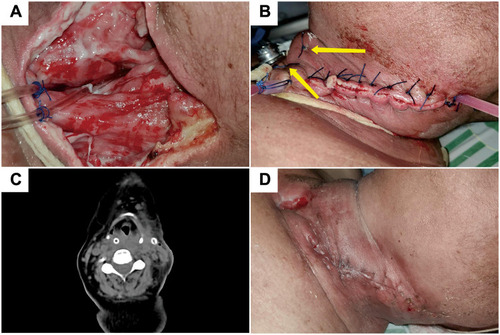Figures & data
Table 1 Distribution of the Types of Deep Neck Infections
Figure 1 CT images of the neck showing low density shadowing and a gas shadow in the cervical subcutaneous, parapharyngeal, retropharyngeal, prevertebral, carotid, and upper mediastinum spaces (A and B). Necrotic fascia of the sternocleidomastoid muscle (C). Removal of necrotic tissue followed by flushing of the pus cavity (D).

Figure 2 An oxygen tube placed in the pus cavity (A). The pus cavity was sutured and a negative pressure drainage placed in position (B). A re-examination CT image of the neck showing that the pus cavity had disappeared and the swelling of soft tissue had subsided (C). Following removal of the drainage tube the incision healed well (D).

Table 2 Comparison of Treatment Effects Between the Two Treatment Groups (±s)
